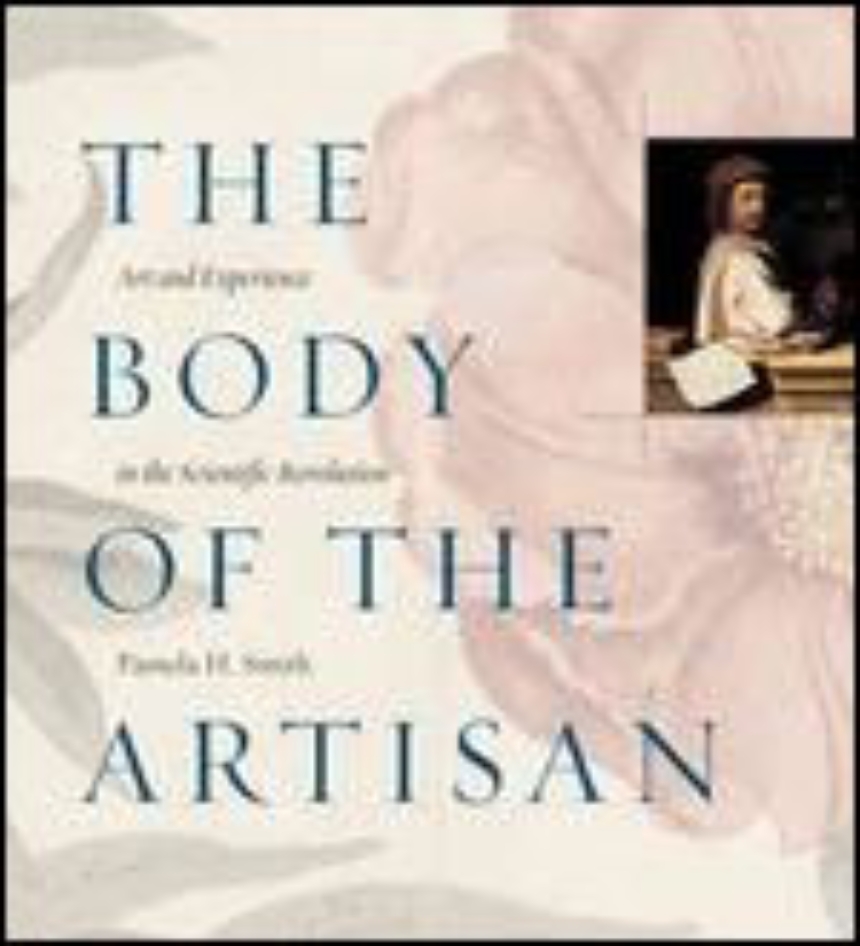The Body of the Artisan
Art and Experience in the Scientific Revolution
Since the time of Aristotle, the making of knowledge and the making of objects have generally been considered separate enterprises. Yet during the late sixteenth and early seventeenth centuries, the two became linked through a "new" philosophy known as science. In The Body of the Artisan, Pamela H. Smith demonstrates how much early modern science owed to an unlikely source-artists and artisans.
From goldsmiths to locksmiths and from carpenters to painters, artists and artisans were much sought after by the new scientists for their intimate, hands-on knowledge of natural materials and the ability to manipulate them. Drawing on a fascinating array of new evidence from northern Europe including artisans’ objects and their writings, Smith shows how artisans saw all knowledge as rooted in matter and nature. With nearly two hundred images, The Body of the Artisan provides astonishingly vivid examples of this Renaissance synergy among art, craft, and science, and recovers a forgotten episode of the Scientific Revolution-an episode that forever altered the way we see the natural world.
From goldsmiths to locksmiths and from carpenters to painters, artists and artisans were much sought after by the new scientists for their intimate, hands-on knowledge of natural materials and the ability to manipulate them. Drawing on a fascinating array of new evidence from northern Europe including artisans’ objects and their writings, Smith shows how artisans saw all knowledge as rooted in matter and nature. With nearly two hundred images, The Body of the Artisan provides astonishingly vivid examples of this Renaissance synergy among art, craft, and science, and recovers a forgotten episode of the Scientific Revolution-an episode that forever altered the way we see the natural world.
408 pages | 28 color plates, 129 b/w halftones, 28 line drawings | 8 3/4 x 9 1/2 | © 2004
Art: Art--General Studies
Reviews
Table of Contents
Acknowledgments
Introduction
Part I: Flanders
Chapter 1: The Artisanal World
Part II: South German Cities
Chapter 2: Artisanal Epistemology
Chapter 3: The Body of the Artisan
Chapter 4: Artisanship, Alchemy, and a Vernacular Science of Matter
Part III: The Dutch Republic
Chapter 5: The Legacy of Paracelsus: Practitioners and New Philosophers
Chapter 6: The Institutionalization of the New Philosophy
Conclusion: Toward a History of Vernacular Science
Notes
Bibliography
List of Illustrations
Index
Introduction
Part I: Flanders
Chapter 1: The Artisanal World
Part II: South German Cities
Chapter 2: Artisanal Epistemology
Chapter 3: The Body of the Artisan
Chapter 4: Artisanship, Alchemy, and a Vernacular Science of Matter
Part III: The Dutch Republic
Chapter 5: The Legacy of Paracelsus: Practitioners and New Philosophers
Chapter 6: The Institutionalization of the New Philosophy
Conclusion: Toward a History of Vernacular Science
Notes
Bibliography
List of Illustrations
Index
